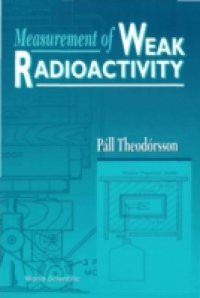This book is intended for scientists engaged in the measurement of weak alpha, beta, and gamma active samples; in health physics, environmental control, nuclear geophysics, tracer work, radiocarbon dating etc. It describes the underlying principles of radiation measurement and the detectors used. It also covers the sources of background, analyzes their effect on the detector and discusses economic ways to reduce the background. The most important types of low-level counting systems and the measurement of some of the more important radioisotopes are described here. In cases where more than one type can be used, the selection of the most suitable system is shown.Contents:Low-Level CountingHistoryAtomic Nuclei and Binding EnergyRadioactivityInteraction of Radiation with MatterOur Natural Radioactive EnvironmentCosmic RaysRadiation DetectorsBackground: Sources and ComponentsMeasurement of Contamination Background ReductionGermanium SpectrometersGas Proportional Counter SystemsLiquid Scintillation Counting SystemsOther Low-Level Counting SystemsNon-Radiometric Methods and Neutron Activation AnalysisImportant Applications of Low-Level CountingStatisticsReferences: Physical Constants and Conversion FactorsPeriodic Table of ElementsReadership: Environmental scientists, nuclear physicists and geophysicists.Key Features:From PDE point of view, this book gives a self-contained introduction to the theory of function spaces including Besov, modulation and Triebel–Lizorkin spacesThe main topics are concentrated in four kinds of important equations, nonlinear Schrödinger, Navier–Stokes, KdV and Boltzmann equationsThis monograph is a unique treatment of the frequency-uniform localization techniques for nonlinear evolution equations

